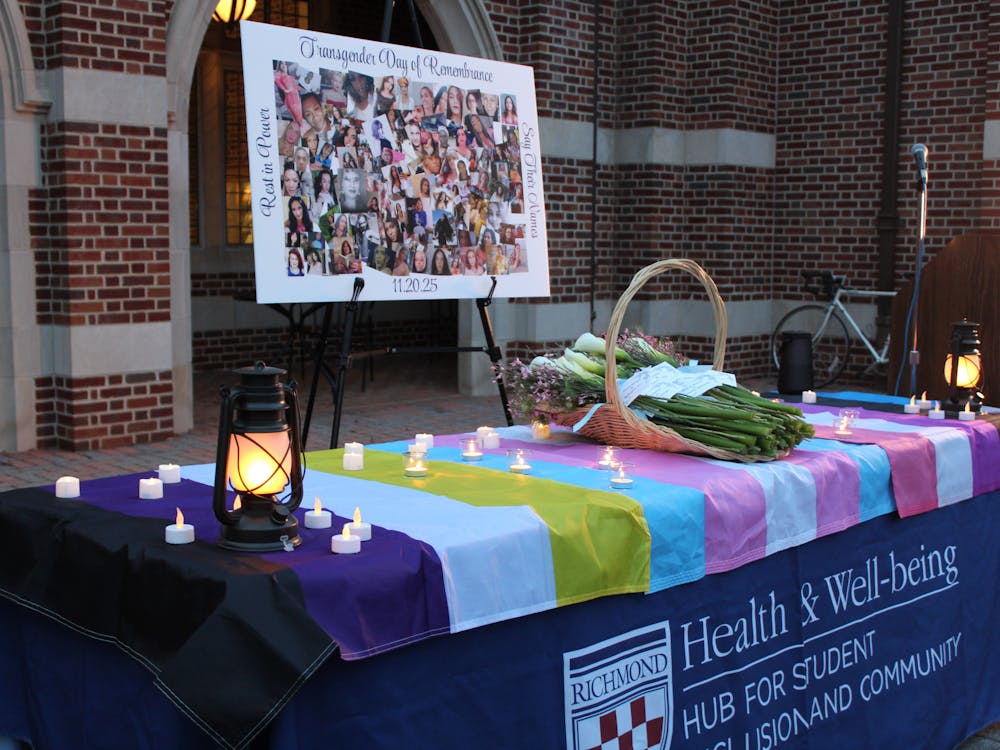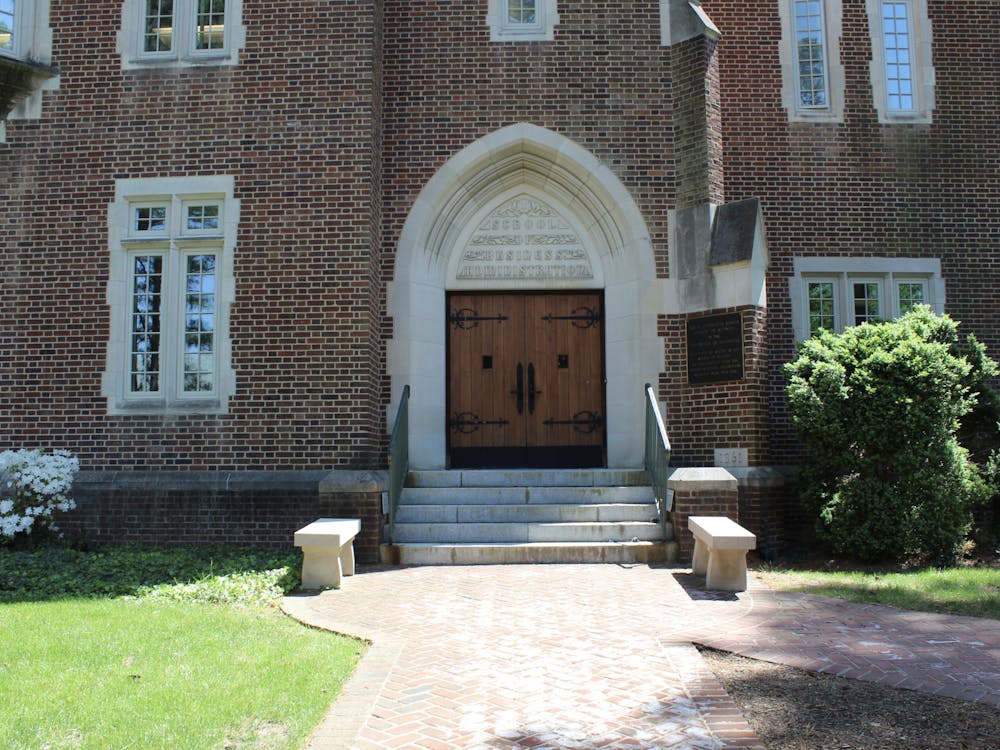At the start of last semester, the Office of Admissions informed tour guides that they would begin taking prospective students and families on a different route through campus to make tours shorter and more efficient, said senior tour guide Austin Carter.
The new route begins at the admissions office, travels through the academic buildings on the Richmond side of campus, crosses the Tyler Hanes Commons, covers the Forum and essentially ends at the Heilman Dining Center, Carter said, where tours cross the lower commons and wind their way through the dorms back to admissions.
Prospective students now do not see the Modlin Center for the Arts, the Westhampton Deanery, North Court, the Greek Theatre or the Weinstein Center for Recreation and Wellness.
Carter said when she had first heard the news in a tour guide meeting, she had been upset, asking immediately how they were going to cover the arts on campus.
"Ultimately, I think it's probably a better tour because it's more concise and easier for guests and prospectives," Carter said. "It's also more wheelchair accessible. It's just hard to fit in talking about the arts."
According to an official statement from Gil J. Villanueva, the assistant vice president and dean for the office of admission, the decision was made based on feedback from touring families, as well as research and data from guidance counselors and our admissions competitors.
Also, because Richmond's campus is more than 350 acres and expanding, tours have never been able to bring visiting families into every building on campus, Villanueva said. "Covering the entire physical plant has become increasingly challenging," he said.
Instead, admissions told tour guides to ask each tour group about their areas of interest so that they can personalize each tour, Villanueva said, adding that information sessions provide perspective students and families with information on every aspect of the university.
Still, administrators and faculty members were surprised to hear about the change.
Dorothy Holland, the head of the Department of Theatre and Dance, said that she had heard the news alongside Gene Anderson and Tanja Softic, the chairpersons of the Department of Music, and the Department of Art and Art History. They were about to give a joint presentation to tour guides about the arts.
"It's mind-blowing," Holland said, adding that she thought the strength of the university was in the number and quality of our programs, and that tours should highlight that strength.
"It isn't that everybody's going to major in the arts," she said, "but parents like to know that these programs are available to their son or daughter. It's a tremendous selling point for the university."
Enjoy what you're reading?
Signup for our newsletter
Holland, however, also said she understood the admissions decision, and mentioned that it had to be the responsibility of the arts departments to communicate about their programs.
"I don't for a minute blame neglect," she said. "I blame the hill. It just takes more time."
Juliette Landphair, the dean of Westhampton College, said she was also surprised to hear the news through a tour guide who worked in the dean's offices. "I remember thinking, I should look into this," she said.
Tour guides would go into the North Court courtyard to talk about Westhampton's history and traditions, Landphair said, remembering a tour she took years ago. And while tour guides can easily talk about Westhampton College elsewhere, Landphair said that there was value in seeing the physical structure of the building.
Landphair acknowledged that Richmond is trying to become a more selective school, and therefore wants to emphasize academics on tours, but she also said that students who come to campus already know what kind of academic institution it is. They want to see the campus, she said, and hear its history and look at their peers.
"This was a higher education place for women," Landphair said. "That was huge at the time. It's a unique aspect of the university, so we feel it's really something to emphasize."
Tom Roberts, the assistant vice president of recreation and wellness, and Kelly Harris, the assistant director the for Weinstein center for recreation and wellness, were not aware that the new tour route did not include the Weinstein Center until they were interviewed.
Harris, who spends her time managing the gym facilities in Weinstein, said anybody in the center would agree that students would find visiting valuable, especially because it was built in 2007.
Roberts agreed, but said that he counts on the initiative of students and their families. "We're a showcase facility," he said. "I just know from my own experience that if they're interested in a specific part of campus, they'll visit themselves."
About admissions, Roberts said, "Apparently there's a science to all that and they study it carefully. They know what they're doing."
And while tour guides, administrators and faculty members have said that they understood the decisions of the admissions office, that hasn't stopped them from taking action themselves.
Holland said she had been busy throughout the summer with perspective students and families who had chosen to tour the Modlin Center of their own accord. Some of these families reached Holland's office with the help of sophomore tour guide Austin Nuckols.
Nuckols said he had always offered to give private tours of any area of campus after the official tour route ended, and most of the perspectives had requested to see the Weinstein Center and Modlin.
"Most of the time," he said, "all I had to do was take them to one of our exceptional faculty members who almost always had them hooked." These extra tours probably added an hour onto the route,
Nuckols said, but most of the visitors left with a better understanding of the arts and how they relate to a student's life on campus.
Carter said she had also made her own adjustments to her tour guiding. At the start of each tour, Carter said she took out a map of campus, showed visitors the route and asked if there was any area they would like to see.
Holland and Carter also have their own ideas about directing tours to the Modlin Center. Carter said she was surprised that the Modlin Center doesn't already offer frequent tours of the arts departments independently, and Holland has already begun mapping out new tour routes that involve shuttles and start in the Modlin parking lot.
"Wellness, arts and the history of education," Landphair said at the end of her interview. "They're all just strong parts of the university."
Contact Collegian Reporter Katie Branca at katie.branca@richmond.edu
Support independent student media
You can make a tax-deductible donation by clicking the button below, which takes you to our secure PayPal account. The page is set up to receive contributions in whatever amount you designate. We look forward to using the money we raise to further our mission of providing honest and accurate information to students, faculty, staff, alumni and others in the general public.
Donate Now


